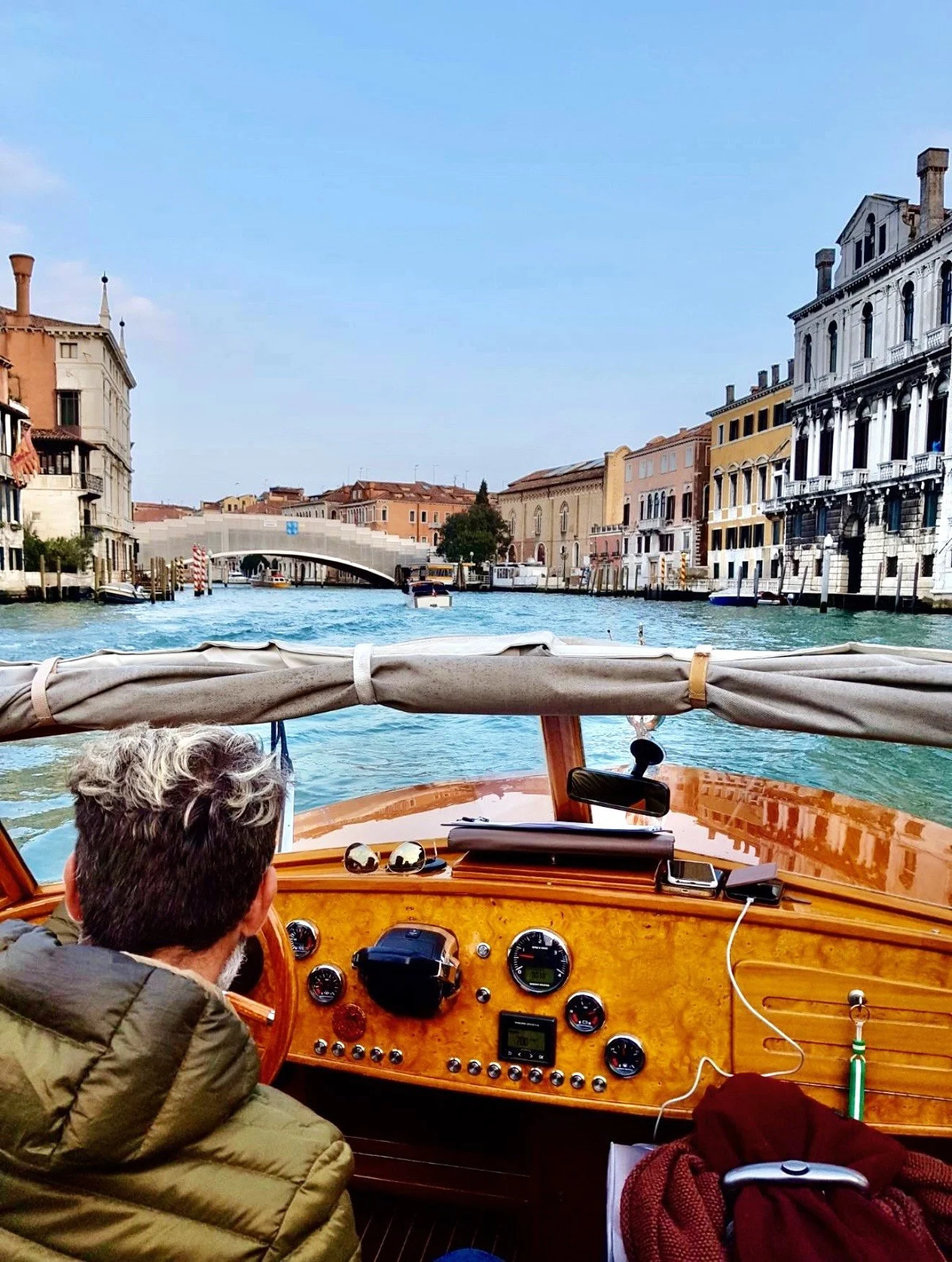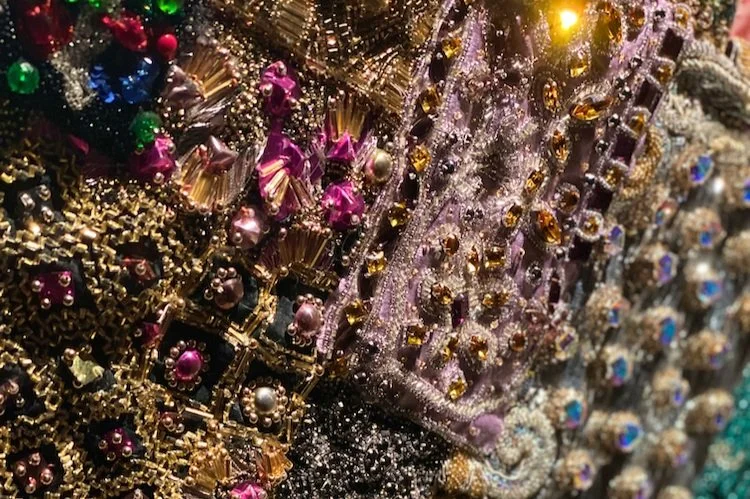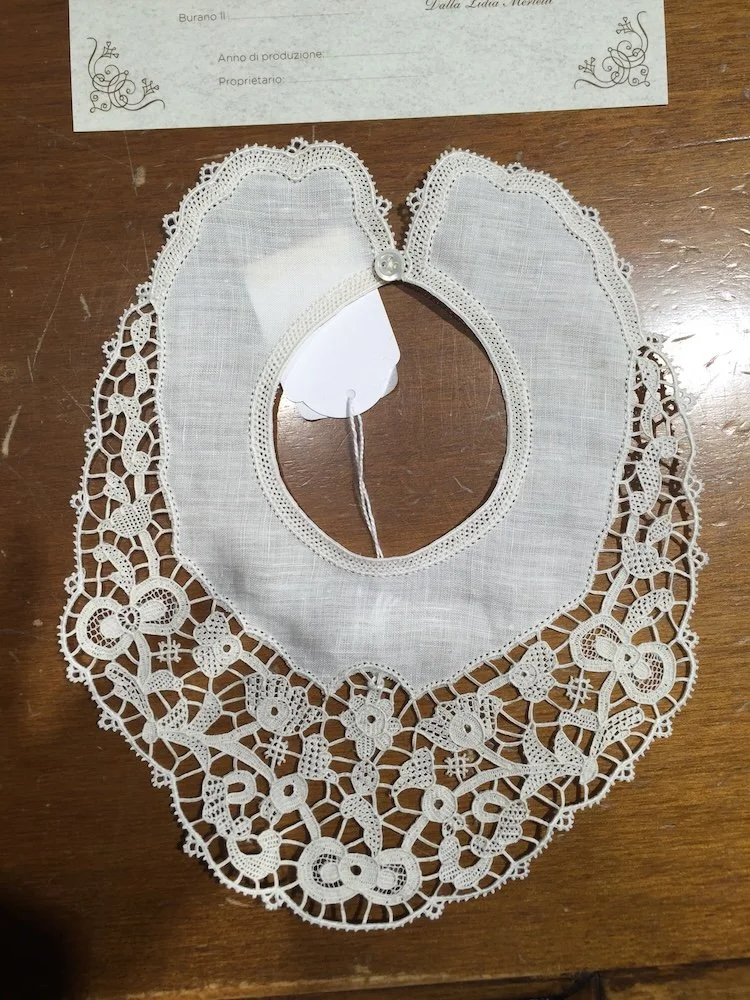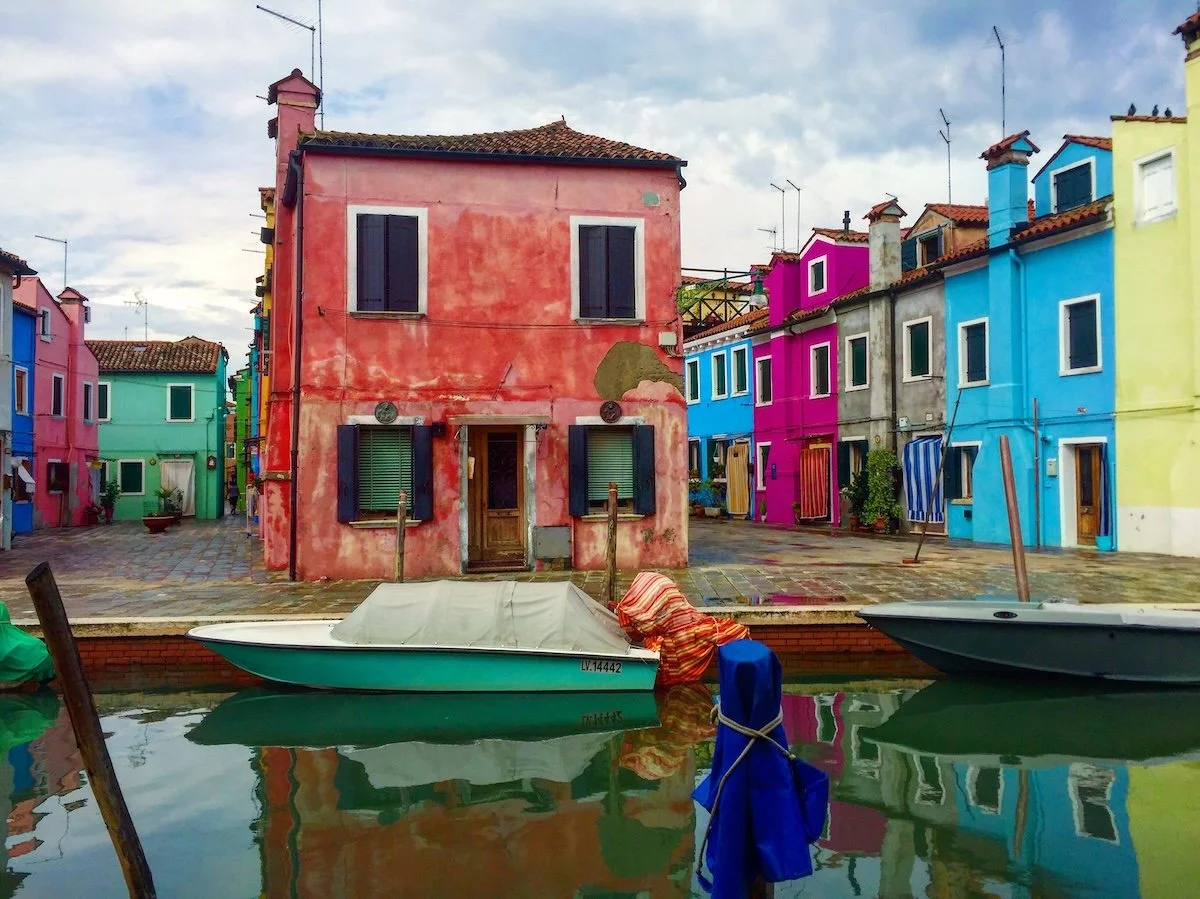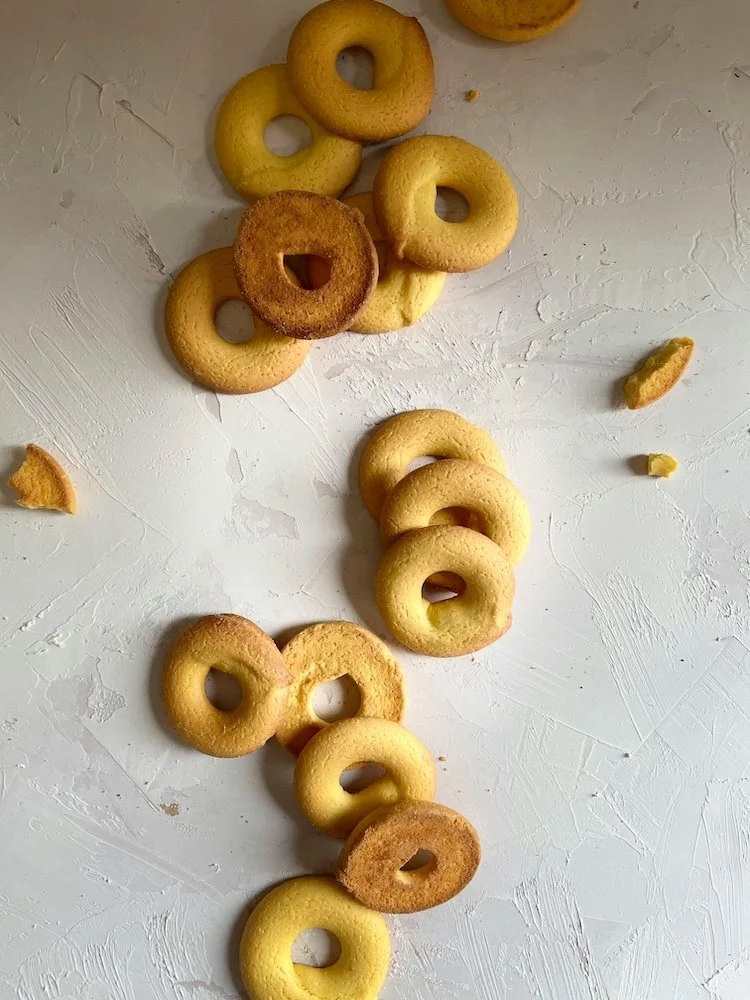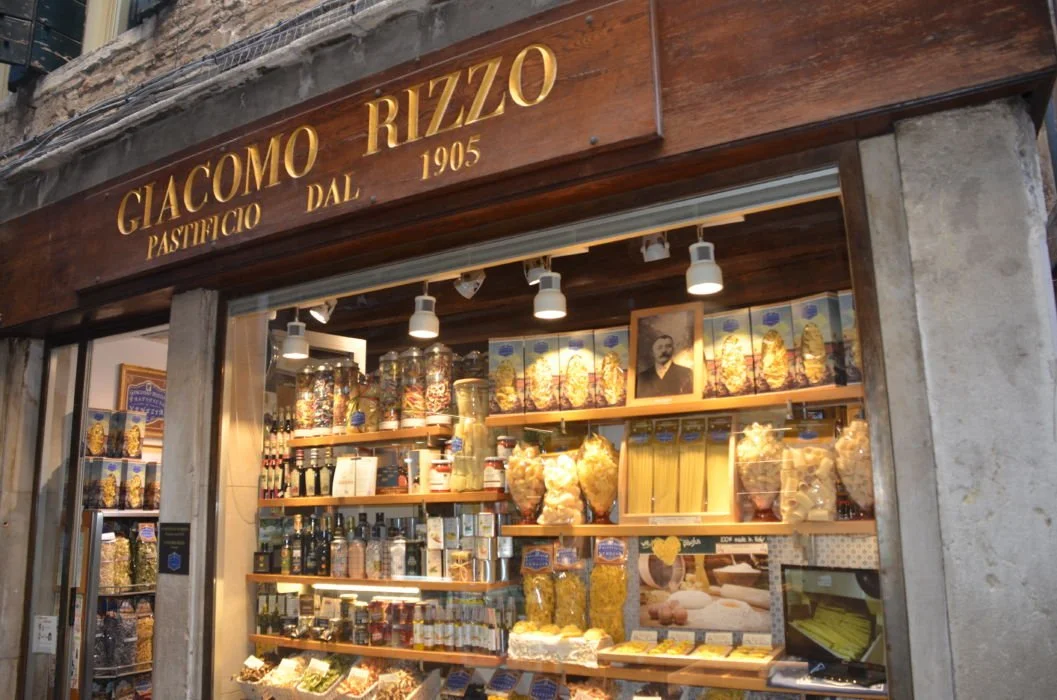How to Enjoy Venice (And Not Be “That’ Tourist)
Here’s your genuinely local guide to enjoying Venice. Below are my favorite ways to explore the city, tips for what to do (and what to skip), and how to not annoy the locals in the process.
Should You Do a Gondola Ride?
Short answer: Yes.
It is pricey... and it’s touristy. But gliding quietly through a side canal at sunset, hearing the paddle usher the boat along through soft, glassy waves while ogling these gorgeous structures dating back to the Middle Ages? Honestly... it’s kinda perfect.
Last I checked, the standard rate for a ride was €90 for a 30-minute daytime ride and €110 for a 35-minute nighttime ride (after 7 PM). That fee covers the boat, not per person, so you can split it with others to lower your cost or you can keep it cozy/romantic. Some central gondola pick-up points include:
Just to the right of the Gritti Palace entrance (Campo Santa Maria del Giglio)
Near Ponte San Moisè (look for the "Gondola WOW" sign)
Public Transportation in Venice: The Vaporetto
(a.k.a. the Water Bus You’ll Definitely Use)
ACTV runs Venice’s public water buses. One-way tickets are €9.50, but if you're planning to hop around, grab a 24-hour pass for €25. It pays off fast. You can buy tickets on Venezia Unica.
If you're coming from the airport, that’s Alilaguna (not ACTV) — similar stops, different ticket. Less glam than a water taxi but a lot cheaper.
Water Taxis: Glamorous, Gliding, and... Gasp-Worthy Prices
Water taxis in Venice are the sleek James Bond version of getting around — gorgeous wooden boats that glide through the canals and make you feel like you’re starring in a movie. They’re also... not cheap.
A standard trip from the airport to the San Marco area can run around €120–€150, depending on the time of day, number of passengers, and any luggage involved. Night rates and extra stops can bump the fare higher.
There are several companies you can find online with a quick search, but like regular taxis elsewhere, many of the base fares are standardized — especially airport transfers.
Is it worth it? For the arrival experience alone: yes. You'll glide into Venice with the wind in your hair and not a rolling suitcase in sight. Just know you’re paying for the scene.
Taxi ride along the Grand Canal
🎨 My Go-To Museums & Galleries
Skip the crowds at St. Mark’s Square and walk across the Accademia Bridge where the art vibes are strong in the Dorsoduro and San Polo districts.
Gallerie dell'Accademia – Old-school Venetian painting, stunning collection.
Peggy Guggenheim Collection – Modern art in Peggy’s actual home. Sculptures, balconies, and vibes.
Punta della Dogana – Dramatic space + contemporary art = a surprisingly cool combo. (This is also where my husband took me on our first date 🌹.)
Palazzo Cini – Small, calm, and lovely Renaissance art.
Ca' Rezzonico – Feels like walking into an 18th-century Venetian home (with chandeliers)
Ca’ Pesaro – a Grand Canal palazzo that blends contemporary and classical art. Their exhibitions change often, and there’s a café on the canal where you can rest your feet (and sip like a local)
Pro tip: You can do most of these in a single afternoon. Reward yourself with a spritz along the Zattere afterward.
Common Question: Should You Visit the Doge’s Palace and Basilica?
They’re classics for a reason. The Doge’s Palace is over-the-top (in the best way) and the Bridge of Sighs is worth walking across at least once. St. Mark’s Basilica is golden, glittery, and takes about 30 minutes to see.
Go early or late (especially in summer).
Book ahead. The Secret Itineraries tour at the Doge’s Palace is great.
Don’t linger too long. Two hours max for the Palace. Less for the Basilica.
Your Doge’s ticket might include other sites — check before buying more.
Venice Biennale and Homo Faber
If you're visiting during the right time of year, keep an eye out for the Venice Biennale.
It’s a rotating international exhibition that alternates annually between Art and Architecture. The Art Biennale tends to draw the bigger buzz and crowds (and Instagrammers), but both are worth checking out depending on your taste. The venues are sprawling and the programming is vast. Think thought-provoking installations, national pavilions, and the kind of art that sparks a debate over dinner. The artists asked to participate are hosted in country-specific pavilions that reflect cultural influence and national identity — from the architectural design of the buildings themselves to the themes, materials, and perspectives explored inside.
Homo Faber is my personal favorite.
It’s a (now annual?) celebration of craftsmanship, hosted on the San Giorgio Maggiore island. As someone trained in haute couture embroidery, I find it inspiring every single time. Even if you’re not the artsy type, the talent and technique on display are jaw-dropping. The types of artisans you’ll find are:
Ceramicists and porcelain decorators
Woodworkers and cabinetmakers
Watchmakers and clock restorers
Goldsmiths and fine jewelers
Instrument makers, from violins to pianos
Leatherworkers and shoemakers
Automotive and mechanical restoration experts
✨ Murano Glass: Shiny, Splurgy, and Surprisingly Packable
Marcus – This is my favorite murano glass vendor in Venice proper (not on the island of Murano), situated right in the center of Piazza San Marco. Our history and trust with these owners go back many years. They used to be located right next door to my husband’s jewelry store facing the Basilica, but recently switched to a newer location — still in the main square — next to Caffè Lavena. Marcus has a large variety of Murano glass options, from glassware to art pieces to jewelry styles to picture frames. The owners also have a solid relationship with a very reliable local shipping group in the event you would like your purchases to be shipped delicately to your house. I recently shipped 10 Murano glass water tumblers to the U.S., and everything arrived perfectly wrapped and intact.
Tour-wise for the island of Murano… you can find some private tour options that will pick you up in Venice proper and transport you to the factories, or you can take the local Venetian transportation (ACTV vaporetto) and then tour factories on your own. Frankly, it is so easy to get there (truly like 5 minutes by boat), so you do not need private transportation. To search Murano glass tours, you can find lots of options on www.viator.com or Airbnb experiences.
My most recent glass factory tour was with Wave Murano Glass, and it was really neat! You can book tour sessions directly on their website, and also particapte in a glass making classes. Check out this feature that CBS News did about their unique glassmaking methods: https://www.cbs.com/shows/video/9TBV6zu9bDTBqZ_xe_6MAuJ30wLaJ39o
Burano Lace & Why You Should Hop on a Boat
This tiny rainbow-colored island ~40 minutes by ACTV vaporetto is famous for handmade lace and looks like someone dropped a watercolor palette into the lagoon and called it a town. The houses are all different candy colors (not by accident — there’s a system!), and the vibe is calm, quirky, and delightfully unpolished.
It’s the historical heart of Venetian lace-making, and you can still find older women stitching by hand in doorways or shop windows. If you're into textiles (like me 🤓), it’s quite a thrill. If not, it's still worth the trip for the charm alone.
Also, while you're there: grab a bussolà — the signature Burano cookie. It’s buttery, eggy, shaped like a ring or S, and tastes kind of like if shortbread and brioche had a baby. Nothing life-changing, but pretty delightful with a cappuccino.
Too short on time for the boat ride to Burano? No problem. You can browse lacework in the city, too. I recommend Fabris in Campo San Bortolomio, a small shop near the Rialto Bridge that sells beautiful handmade pieces without the mass-produced feel.
Prefer the edible kind of souvenirs? (Me too.)
Skip the plastic gondolas and visit these local shops:
Rizzo – For olive oils, spices, sauces, and pasta. There are multiple locations, but the one near the Rialto Bridge is my pick.
Mille Vini – A great little wine shop just steps from the Rialto Bridge.
Marchini or Rosa Salva – For cookies and traditional sweets. Look for bags of the classic bussolà or zaeti.
Where to Walk (and Why You Should Get Lost on Purpose)
Venice is divided into six neighborhoods called sestieri (singular: sestiere), a term so specific to Venice that even people in nearby cities like Verona will look at you like you made it up. Classic Venice.
While San Marco and San Polo are beautiful (and where we used to live — I know, we’re nuts), the real magic lives in the quieter corners. These are the neighborhoods where actual Venetians still live, hang laundry from their windows, and buy groceries without having to dodge selfie sticks.
Here are my favorite sestieri to wander:
Cannaregio – My husband’s childhood stomping grounds. Skip the busy Strada Nuova and head just north to find peaceful, residential alleys that feel like a different city.
Castello / Arsenale – Calm, authentic, and full of little surprises. Wander long enough and you’ll stumble into art studios, boatyards, and sleepy campos.
Giardini – This area has Venice’s only real park (!). If you’re traveling with kids who need to let some energy out, the playgrounds inside the park are great, too. This is also where you’ll find the Biennale pavilions and shady benches that feel like a vacation from your vacation.
Dorsoduro – Artsy, mellow, and full of canalside moments you’ll want to bottle up and bring home. Great museums, too.
Once you reach one of these neighborhoods? Put away the map. Seriously. Fold it up, stash it, and just start walking. Venice is safe, small, and practically built for getting lost. You’ll turn a corner and find a violinist rehearsing by an open window or a cat lounging on a marble wellhead or even an artist restoring an old painting. Let it happen.
Last, but not least…. How to Not Be That Tourist
Venice is fragile, and it’s full of locals just trying to go about their day. A few ways to be thoughtful:
Don’t walk three people-wide in narrow alleys. Please, please move right when others are passing. 🙏
Don’t eat on church steps, bridges, or building entrances. Picnic elsewhere, like in the gardens of Sestiere Casetllo. I’ve literally stepped outside my front door before to find random strangers eating sandwiches on my doorstep — leaving trash and crumbs everywhere. Not a great feeling.
Don’t swim in the canals. Yes, people try. No, it’s not the Amalfi Coast. In fact, most of Venice's sewage goes directly into the city's canals. 😬
Keep it down at night. Some locals do still live here. If you’re too loud, a fed-up Nonna might dump a bucket of water from her window onto your head. If it’s a grouchy Nonno? Let’s just hope it’s water. 💛
Cover shoulders/knees when entering churches.
Support real artisans! Every time. Skip the cheap souvenir shops, and buy glass, lace, cookies, jewelry, sandals, whatever it might be — as long as its from local makers. They only way they survive is with you.
